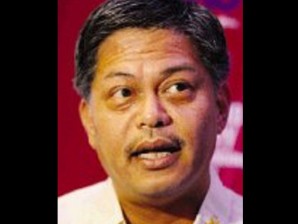Corporate Securities Info
By: Raul J. Palabrica Jr.
Philippine Daily Inquirer
11:46 pm | Thursday, December 1st, 2011
Metro Manila-based
colleges and universities are no longer assured of their graduates
dominating, if not topping, government licensure examinations.Last Monday, the Inquirer reported (as front page news, mind you) that graduates of the Catanduanes State Colleges bagged the top three places in the board exams for civil engineers given earlier this month.
They bested graduates of the University of the Philippines, University of Santo Tomas, Technological Institute of the Philippines and Mapúa Institute of Technology who used to lord it over these tests.
Although this is not the first time that alumni of the lone state college in Catanduanes made good in the exams, bagging the top three slots may be considered phenomenal considering the quality of the competition.
What makes the results more interesting is, the Top 10 consisted of graduates of “promdi” (the snooty Manila-inspired description for people who come from the provinces) schools in Bulacan, Davao, Mindoro Oriental and Zambales.
The feat merited the publication of the photos of the three Catanduanes graduates in the Inquirer, a privilege often given only to topnotchers of the bar exams.
This fixation with the law profession, which dates back to the country’s colonial past, is prevalent also in other broadsheets and media outlets.
Education
The results of government licensure tests in recent years have shown that graduates of private and public educational institutions outside Metro Manila are no longer the pushovers they were once thought to be.
The “Imperial Manila” syndrome (or the impression that anything that comes from the national capital is better than the rest of the country) has engendered the belief that only Metro Manila schools are capable of providing quality education.
Sleek publicity about graduates of these schools dominating board exams and famous personalities touting their links with so-called elite campuses have bred feelings of inferiority among students who, for financial or personal reasons, opt to study in their hometowns.
This sense of inadequacy is further reinforced when province mates studying in Metro Manila who come home for the holidays strut around with superior airs or engage in activities that tend to show that their rural counterpart have much to learn from them.
To aggravate matters, advertisements for new hires in private companies often state their preference for graduates of certain Metro Manila schools. The subliminal message is, those who got their education elsewhere are better off trying their luck in companies with less demanding academic credentials.
Recognition
The prejudice for certain graduates can also be felt in companies whose key executives or human resource personnel are fanatically devoted to their alma mater.
These are the types whose rooms are lined with knickknacks that show their school logo, or who skip work to attend basketball games that involve their school teams, or who instinctively come up with petty remarks when positive statements are made about their school rival.
Thus, if the alumni of, say, UP, Ateneo or La Salle, are in positions of influence in a company, expect them to give priority to applicants whose curriculum vitae include their school.
When confronted about this discriminatory attitude, they usually give the excuse that they know what their fellow alumni went through before getting their diploma so they have more confidence in their ability to take on the jobs applied for.
Bluntly stated, the “other school” graduate is an unknown factor whose skills have yet to be tried or tested, so why take the risk.
If at all, exceptions are made from this elitist posture only when the applicant is too good to be left off to competitors, or has a backer who cannot be turned down without adverse consequences.
Unless he holds a key position in the company, his “peculiar” academic credentials will nonetheless give rise to subtle acts of discrimination or put him out of the loop when fellow alumni in the staff talk about school-related matters.
Review
Under these circumstances, it is not surprising that provincial residents prefer to come to Metro Manila for the education that, in their mind, would assure their passing the licensure exams for their chosen professions and, in the process, be assured of gainful employment in the future.
The exemplary showing of graduates of provincial schools in these tests should spur companies that still hold traditional views about Metro Manila-acquired education to undertake a serious review of their employment policies.
Thanks to the Internet and other modern means of instruction, the quality of education in colleges and universities outside Imperial Manila has im proved tremendously.
In fact, the results of the periodic assessment examinations conducted for primary and secondary students all over the country consistently show that many of the students in the provinces outshine their Metro Manila counterpart in mathematics and science.
It helps that the provincial students are not bothered by the problems of traffic congestion, pollution and other distractions that Metro Manila residents have to bear with as part of their daily living.
The provincial students have to thank their stars that, considering their less stressful living conditions, they are able to focus on their studies better and, as a result, are able to go toe to toe with graduates of Metro Manila-based schools in government licensure examinations.
Next time the results of these tests are published, it would be interesting to find out how many graduates of provincial schools are in the Top 10.
(For feedback, please write to rpalabrica@inquirer.com.ph.)
http://bit.ly/vFDqSV


